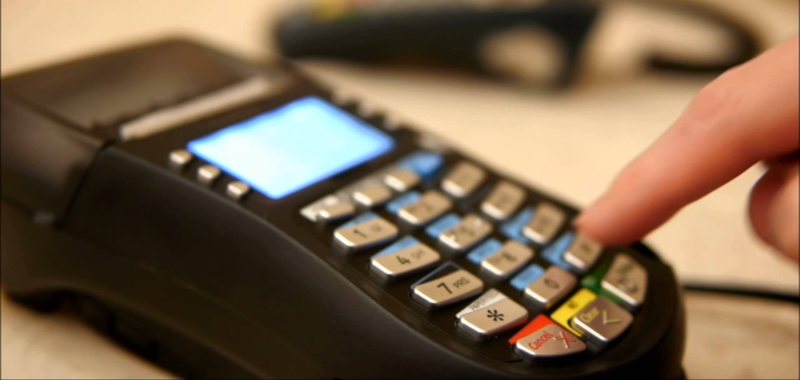Sa e përballojnë kredinë familjet shqiptare? - BSH: Në shumicën e rasteve, pagesat e kësteve zënë më pak se 30% të të ardhurave

Në gjysmën e dytë të vitit 2024, shlyerja e kësteve të kredisë nuk ka rënduar shumë në xhepat e familjeve shqiptare. Sipas vrojtimit më të fundit të Bankës së Shqipërisë për huamarrjen e familjeve, rreth 84% e këtyre të fundit deklarojnë se pagesa e huasë zë “më pak se 30% të të ardhurave mujore” dhe ky tregues është rritur me 9 pikë përqindje në terma gjashtëmujorë dhe me 1 pikë përqindje në krahasim me 2023. Në të njëjtën kohë, pesha e familjeve për të cilat “pagesa e huasë” tejkalon 30% të të ardhurave ka shënuar rënie.
Për sa i përket aftësisë së familjeve për të shlyer kredinë, rreth 53% e familjeve huamarrëse kanë deklaruar se aftësia e tyre paguese ‘nuk ka ndryshuar’ gjatë periudhës së vrojtuar. Pjesa tjetër e të përgjigjurve, vlerësojnë në agregat përkeqësim të aftësisë së tyre paguese, ku 33% kanë deklaruar ‘përkeqësim’ dhe 15% kanë deklaruar ‘përmirësim’.
Megjithatë, rreth 67% e familjeve nuk presin që aftësia e tyre paguese të ndryshojë në gjysmën e parë të vitit 2025, ndërsa pjesa e mbetur e familjeve pret përkeqësim.
Lidhur me kërkesën për kredi, rreth 59% e atyre që janë përgjigjur kanë deklaruar se “nuk presin të marrin hua të re në gjysmën e parë të vitit 2025”, ndërsa ka pasur vetëm një rritje modeste të vlerës së indeksit të planifikimit të huamarrjes, e cila sugjeron për një qëndrueshmëri të kërkesës së individëve për kredi në gjysmën e parë vitit 2025.
Qëllimi kryesor i huamarrjes së familjeve mbetet ‘për konsum’ në 42% të rasteve të huamarrjes, ‘për blerje/riparim prone’ në 23% të rasteve dhe për ‘zhvillim biznesi’ në 12% të rasteve. Pesha e rasteve të huamarrjes për blerje/riparim prone dhe për konsum kanë shënuar rritje, ndërsa pesha e rasteve të huamarrjes për zhvillim biznesi ka rezultuar në rënie (me 6 pp) krahasuar gjashtëmujorin e kaluar.
Në rreth 49% të rasteve të raportuara, huamarrja e familjeve rezulton në formën e kredisë nga institucione financiare, ku 44% e rasteve janë në trajtë ‘kredie bankare’, dhe 6% janë në trajtë kartash krediti dhe overdraft. Në rreth 34% të rasteve, huamarrja deklarohet në formën e parasë në dorë dhe në 16% të rasteve në formë malli të papaguar. Të dyja këto pesha kanë shënuar rënie si në terma gjashtëmujorë dhe në terma vjetorë.

Filmat evropianë, të rrezikuar nga tarifat - Industria mund të “sakrifikohet” për të arritur marrëveshje me Trump
Industria e filmit në Evropë është e shqetësuar se legjislacioni i fituar me vështirësi që përcakton kuotat e përmbajtjes evropiane për platformat e......

“350 projekte për rrugët në 12 vite në Qarkun Elbasan” - Rama: Do të vazhdojmë me rritjen e ivestimeve në këtë qark
Në takimin e radhës me banorët e qytetit të Librazhdit, Kryeministri i vendit, njëherësh Kryetar i Partisë Socialiste, Edi Rama, foli për investimet në......

“IA po i bën punonjësit antisocialë” - Sipas raportit, njerëzit po përdorin teknologjinë për të shmangur kolegët
Punonjësit e zyrës po i drejtohen inteligjencës artificiale kur nuk duan të pyesin kolegët e tyre, sipas raportit të ri të Microsoft. Kompania anketoi......

Borxhi publik arrin në 14.2 miliardë euro 54.2% e PBB-së - Ndikim, Eurobondi i emetuar në muajin Shkurt
Borxhi publik në tremujorin e parë të këtij viti ka arritur në vlerën e 14.2 miliardë eurove, nga 13.6 miliardë euro që ishte në fund të tremujorit të katërt......

Rriten çmimet e energjisë në Bursën Shqiptare - 3-mujori shënon shtrenjtim me 77%, vlera e transaksioneve arriti në rreth 44.6 mln euro
Rreth 322 mijë mWh energji u tregtua në Bursën Shqiptare të Energjisë Elektrike gjatë 3-mujorit të parë të këtij viti, teksa vlera e transaksioneve......

Hapet thirrja për terminale POS falas - Mastercard do të shpërndajë 4750 të tillë për 1 vit. Cilat biznese përfitojnë?
Janë hapur aplikimet për të përfituar 1 nga 4750 terminalet POS falas të programit POSI të Mastercard. Vetëm bizneset e vogla dhe të mesme që operojnë në......

Transferimi ndërkombëtar i të dhënave personale: Shqipëria e Kosova njohje reciproke!
Në kuadër të ligjit nr. 124/2024 “Për mbrojtjen e të dhënave personale”, Zyra e Komisionerit për të Drejtën e Informimit dhe Mbrojtjen e të Dhënave Personale......

Zgjedhja e Merz, dështon raundi i parë i votimit - Lideri konservator nuk arriti të siguronte shumicën në parlamentin gjerman
Lideri konservator gjerman Friedrich Merz nuk arriti të siguronte shumicën parlamentare për t'u bërë kancelar në raundin e parë të votimit. Parlamenti ka 14......



















